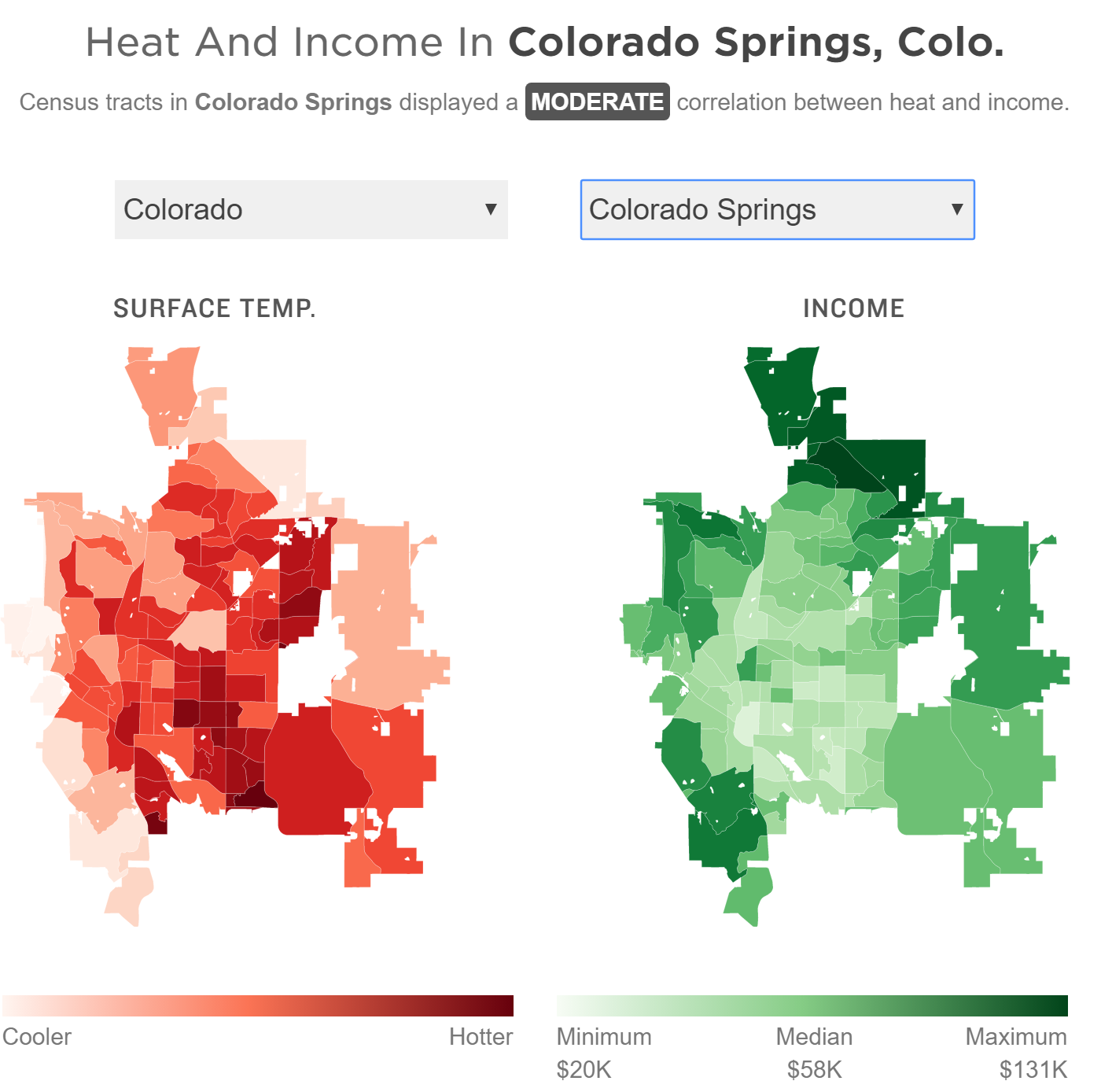Fighting Heat and Poverty with Living Roofs
3 minute read
I recently read an article on NPR (see link below [1].) on how poor neighborhoods disporportionately feel the effects of a warming world compared to their more affluent counterparts. This trend is not new; repeated studies show that the poor are the least well-equipped to deal with a changing environment, whether due to natural disasters, rising sea levels, or increased heat. Looking at the article's side-by-side images comparing surface temperature and income for multiple regions across the United States, it is clear that poor neighborhoods suffer from rising temperatures more than wealthy ones. Interestingly, this coorelation is partially due to the amount of green cover, which provides not only shade, but also natural evaporation, cooling the air. Poorer areas are normally "concrete jungles" with few refuges such as parks and green spaces, whereas affluent neighborhoods always have trees. So what's being done to mitigate these differences?

Some cities are making changes to combat the heat, such as installing cool roofs and increasing community green spaces. I believe these efforts are helpful. But I also believe that the best solutions solve multiple problems simultaneously. Not only are poorer areas more likely to suffer from extreme heat, but they are also more likely to lack access to fresh fruits and vegetables (so-called food deserts) and be heavily polluted. As we look for ways to house more people in increasingly crowded spaces, we need to start thinking about how we can design multipurpose spaces. That's why I love the idea of a green, living roof.
Creating a green roof has the obvious benefits of cooling and shading that were explained above. And unlike cool roofs, a green roof would not be a potential set back in the winter, when a roof absorbing extra heat can be beneficial. (If anything, there may be small insulation benefits from the beds sitting atop the building. But I digress.) Green roofs also capture excess rainfall, which is great in urban areas where much of the surface is impermeable, leading to large amounts of runoff that can overwhelm storm drains. They also help clean up smog and improve air quality in these neighborhoods often ailed by various air-quality issues. On top of that, they're pretty. Green roofs add color where there is often just concrete.
But green roofs don't just represent environmental gains. They are especially important because they enable the people living within the building to take control of their situation and build a community. Urban areas often do not have the luxury of having garden spaces, and using unused rooftop spaces for gardening would increase access to fruits and vegetables (not to mention reduce the cost of purchasing them for those who can't afford them). Green roofs can create communities, a space where people can sit and relax, talk, and garden together. It provides the very park-like space right in the comfort of home and which may not be easily accessible by foot elsewhere. Now I am not arguing that green roofs are meant to replace parks or anything, nor do I claim they are some sort of panacea for all the urban poor's ailments. But normalizing green roofs would be a big step forward in giving people more options and taking control of their situation rather than solely relying on the city to make the changes they need. It would provide environmental and community benefits, and I don't think those can be monetized.
I hope to one day have the ability to improve and empower people through programs that establish green roofs and create more green spaces. And until then, I'll keep looking for new and interesting ideas that allow humanity and the environment to thrive together.
Link to article:
[1] https://www.npr.org/2019/09/03/754044732/as-rising-heat-bakes-u-s-cities-the-poor-often-feel-it-most